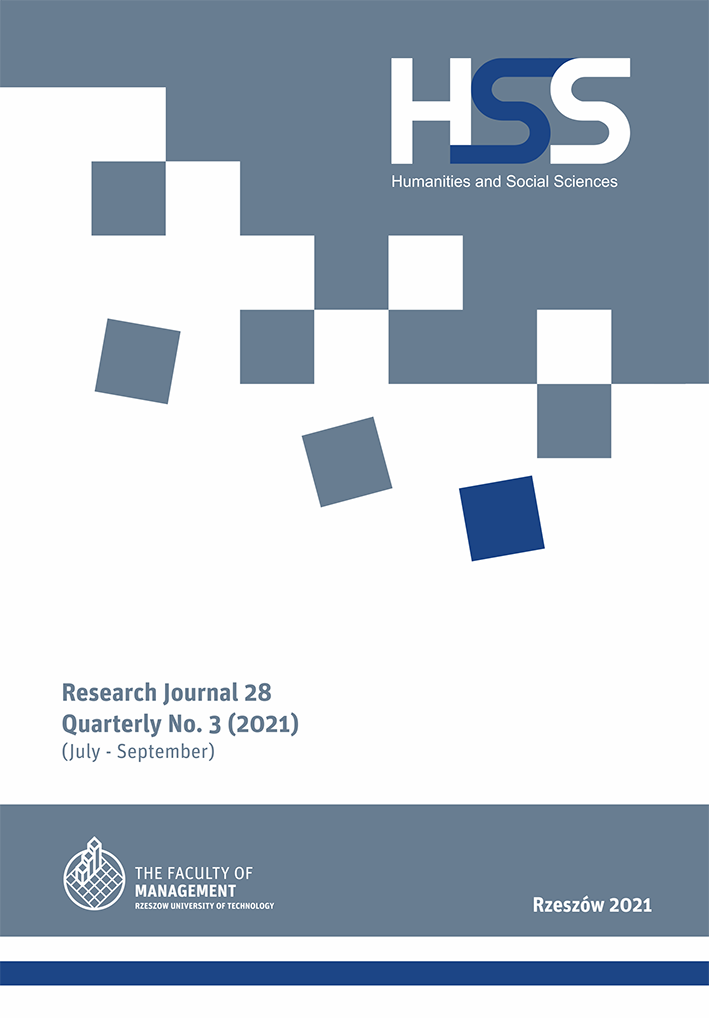Abstract
There is a common belief that despite the many legal, practical, and supportive solutions that the EU has introduced in recent years in the area of internal security, its citizens still lack assurance. In order to obtain the desired state of security, it is necessary to improve the existing solutions and create completely new ones. This need is associated with a deep awareness of threats, as well as knowledge of the mechanisms of their emergence and functioning. The aim of this article is to identify threats selected by scientists and experts that cause the greatest fear and anxiety in all the EU states and their citizens using theoretical methods such as analysis, synthesis, generalization, and inference. These findings highlight the opportunity to learn about the essence of threats to the internal security of the EU states that arise from contradictions and antagonisms on political, economic, and social bases and are caused not only by human activities but also by natural phenomena, the effects of which may be immediate or anticipated and very severe.
References
Bąkowski, P. (2013). Organised crime in the European Union [Access: 20.12.2020]. Access on the internet: https://www.movimentoeuropeo.it/images/Organised%20crime%20in%20the%20European%20Union.pdf
BiznesAlert (2019). Germany: Rośnie liczba cyberataków na infrastrukturę krytyczną, w tym energetykę [Access: 20.12.2020]. Access on the internet: https://biznesalert.pl/niemcycyberataki-energetyka
Bremberg, N., Sonnsjö, H., Mobjörket M. (2019). The EU and climate-related security risks: a community of practice in the making? “Journal of European Integration”, Vol. 41, No. 5. DOI: 10.1080/07036337.2018.1546301.
Dąbrowski, M. (2015). Cyberatak zagrożeniem XXI wieku. „Możliwości porównywalne z oddziaływaniem militarnym” Access on the internet: https://www.cyberdefence24.pl/cyberatak-zagrozeniem-xxi-wieku-mozliwosci-porownywalne-z-oddzialywaniemmilitarnym-raport.
Dennison, S., Franke, U.E., Zerka, P. (2018). The nightmare of the dark: The security fears thatkeep Europeans awake at night [Access: 10.12.2020]. Access on the internet: https://ecfr.eu/special/the_nightmare_of_the_dark_the_security_fears_that_keep_europeans_awake_at_n
Dokos, T. (2019). Threats and Challenges to European Security and the Need for Well-informed Parliamentarians. Access on the internet: https://www.mercatoreuropeandialogue.org/download-file/983
EMCDDA (2019). European drug Report. Trends and Developments. DOI: 10.2810/546710.
European Commission (2020). Communication from the Commission to the European Parliament, the European Council, the Council, the European Economic and Social Committee and the Committee of the Regions on EU Security Union Strategy.
European external Action Service (2016). A global strategy for the European Union’s foreign and security policy. DOI: 10.2871/565395.
Europol (2011). General Report on Europol Activities. European Police Office.
—— (2016). Situation Report. Trafficking in human beings in the EU [Access: 25.01.2021]. Access on the internet: https://www.europol.europa.eu/publications-documents/trafficking-in-human-beings-in-eu.
—— (2020), Pandemic Profiteering. How criminals exploit the COVID-19 crisis [Access: 28.01.2020]. Access on the internet: https://www.europol.europa.eu/publicationsdocuments/pandemic-profiteering-how-criminals-exploit-covid-19-crisis
—— (2020). Europol’s EU Terrorism Situation and Trend report (TE-SAT [Access: 28.01.2020]. Access on the internet: https://www.europol.europa.eu/activities-services/main-reports/european-union-terrorism-situation-and-trend-report-te-sat-2020
Forsal.pl (2019). Oto kraje UE, które są najbardziej uzależnione od importu ropy naftowej [Access: 15.01.2021]. Access on the internet: https://forsal.pl/artykuly/1428385,oto-krajeue-ktore-sa-najbardziej-uzaleznione-od-importu-ropy-naftowej-infografika.html
Konarzewska, A. (2010). Migracyjne problemy Unii Europejskiej. „Zeszyty Naukowe Uniwersytetu Ekonomicznego”, No. 824.
Kundzewicz, Z. W. (2008). Konsekwencje globalnych zmian klimatu. „Nauka”, No. 1.
Muczyński, R. (2019). Nielegalna migracja do Europy maleje. „MILMAG. Magazyn Militarny” [Access: 8.01.2021]. Access on the internet:. https://www.milmag.pl/news/view?news_id=2885
Pawłowski, A. (2020). Covid-19, Environmental Engineering and the End of the World. “Problemy Ekorozwoju”, No. 2.
Pérez de las Heras, B. (2020). Climate security in the European Union’s foreign policy: addressing the responsibility to prepare for conflict prevention. “Journal of Contemporary European Studies”, Vol. 28, No. 3. DOI: 10.1080/14782804.2020.1731438.
Rada Europejska (2010). Strategia bezpieczeństwa wewnętrznego Unii Europejskiej. Dążąc do europejskiego modelu bezpieczeństwa. DOI: 10.2860/91252.
Rada UE (2009). Europejska strategia bezpieczeństwa. Bezpieczna Europa w lepszym świecie. DOI: 10.2860/16160.
Shaffer, R. (2020). Homegrown Terrorism and Responses in Europe. “Terrorism and Political Violence”, Vol. 32. DOI: 10.1080/09546553.2020.1776994.
Shapiro, J., Hackenbroich, J. (2017). Opportunities amid disorder: Europe and the World in 2018. [Access: 14.01.2021]. Access on the internet:https://www.ecfr.eu/page/-/Opportunities_Amid_Disorder.pdf
Skoneczny, Ł. (2011). Wpływ zmian klimatycznych na bezpieczeństwo Unii Europejskiej – wybrane zagadnienia. „Przegląd Bezpieczeństwa Wewnętrznego”, No. 5.
SOCTA (2017). Threat Assessment. Crime in the age of technology. European Police Office [Access: 29.12.2020]. Access on the internet:https://www.europol.europa.eu/activitiesservices/main-reports/european-union-serious-and-organised-crime-threat-assessment2017
Stolarski, M. P. (2019). Ataki cybernetyczne jako współczesne źródło zagrożeń bezpieczeństwa, rozprawa doktorska. Warszawa: ASzWoj.
Wawrzusiszyn, A. (2017). Illegal migration to modern Europe. Methods, trendenies, trends, “Doctrina. Studia Społeczno-Polityczne”, No. 13. Access on the internet: hhttp://hdl.handle.net/11331/2690
Wojciechowski, S. (2018). Terroryzm wciąż zagraża Unii Europejskiej [Access: 16.12.2020]. Access on the internet:https://rcb.gov.pl/terroryzm-wciaz-zagraza-unii-europejskiej
Wrzosek, M. (2013). Współczesne zagrożenia w obszarze bezpieczeństwa europejskiego. Warszawa: Wydawnictwo Menedżerskie PTM.
—— (2015). Dylematy zarządzania europejskiego. Warszawa: AON.
Zięba, A. (2016a). Oczekując nieoczekiwanego: zagrożenie terrorystyczne w Unii Europejskiej. Siemiątkowski, Z., Zięba, A. (sc. ed.), Służby specjalne we współczesnym państwie. Warszawa: Elipsa.
—— (2016). Współczesne wyzwania i zagrożenia dla bezpieczeństwa międzynarodowego [Contemporary Challenges and Threats to International Security]. „Stosunki Międzynarodowe – International Relations”, 3(52). DOI: 10.7366/02090961320160.
Zubrzycki, W., Babiński, A. (2017). Procedury bezpieczeństwa w Unii Europejskiej. Warszawa: Difin.


